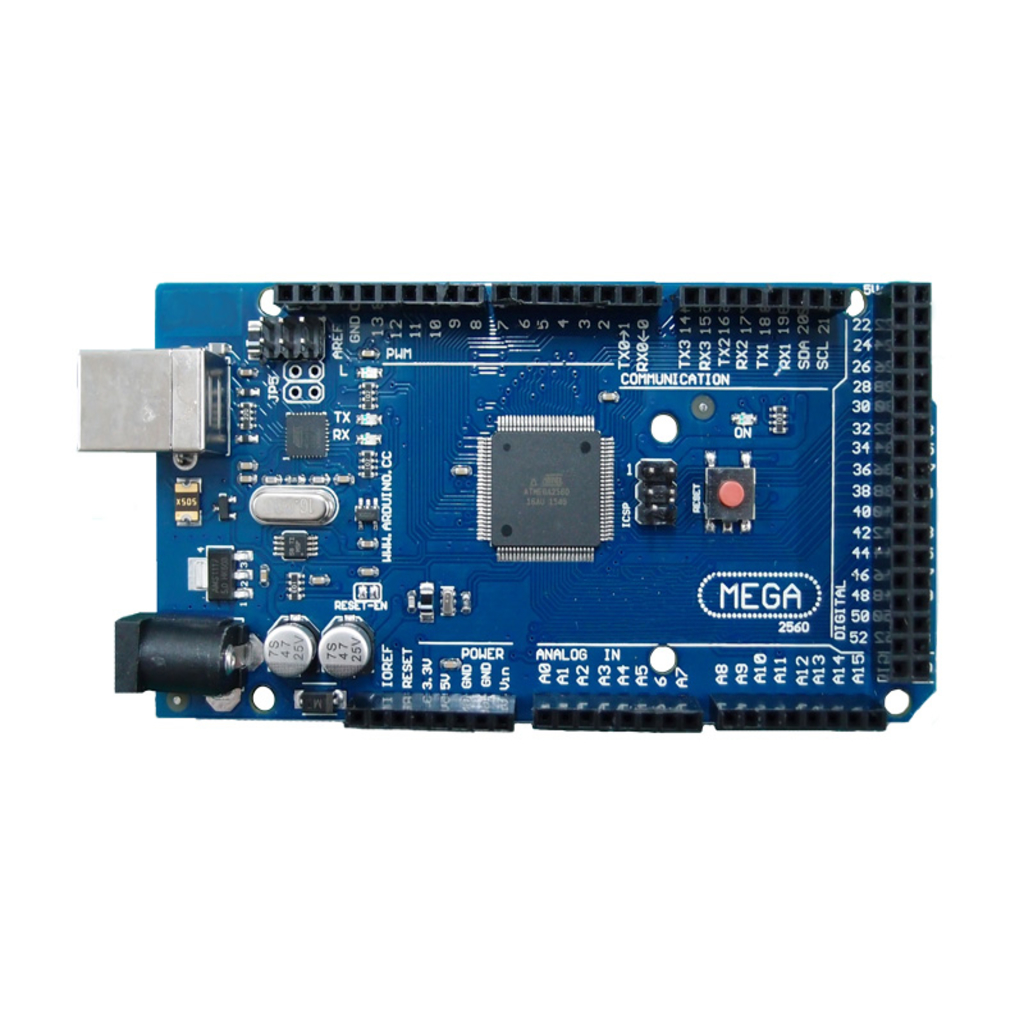Arduino UNO
499.00
Arduino Uno is a microcontroller board based on the ATmega328P (datasheet). It has 14 digital input/output pins (of which 6 can be used as PWM outputs ,6 analog inputs, a 16 MHz quartz crystal, a USB connection, a power jack, an ICSP header and a reset button. It contains everything needed to support the microcontroller; simply connect it to a computer with a USB cable or power it with a AC-to-DC adapter or battery to get started.
Features:
- Microcontroller: ATmega328P
- Operating Voltage: 3.3/5V
- Input Voltage: 1.8-5V
- DIO Pins: 14 (of which 6 provide 'PWM' output)
- AIO Pins: 6
- DC Current per I/O Pin: 20 mA (40mA peak)
- DC Current for 3.3V Pin: 50 mA
- Maximum Board Load Current: 200mA
- Flash Memory: 32KB (ATMega328P) of which 0.5 KB used by bootloader
- SRAM: 2KB (ATMega328P)
- EEPROM: 1KB (ATMega328P)
- Clock Speed: 16MHz
- System Bus: 8-bit
- USART: 1
- Serial TTL, SPI, I2C support
- Timers - 3
- External Interrupts, Supply & Clock support
Arduino Nano
299.00
The Arduino Nano is a small, complete, breadboard-friendly board based on the ATMega328P (Arduino Nano 3.x). It has more or less the same functionality as of the Arduino Duemilanove, but in a different package. It lacks the DC power jack and works with a Micro USB cable instead of a 'Type B' one.
Features:
- Microcontroller: ATmega328
- Architecture: AVR
- Operating Voltage: 5V
- Flash Memory: 32KB of which 2 KB used by bootloader
- SRAM: 2KB
- Clock Speed: 16 MHz.
- AIO Pins: 8
- DIO Pins: 22 (6 of which are PWM)
- EEPROM: 1KB
- Max DC Current per I/O Pins: 40 mA (I/O Pins)
- Input Voltage: 1.8-5.5V
- PCB Size: 18 x 45mm
Arduino Mega
990.00
The Arduino Mega is a microcontroller board based on the ATmega2560. It has 54 digital input/output pins (of which 14 can be used as PWM outputs), 16 analog inputs, 4 UARTs (hardware serial ports), a 16 MHz crystal oscillator, a USB connection, a power jack, an ICSP header, and a reset button.





